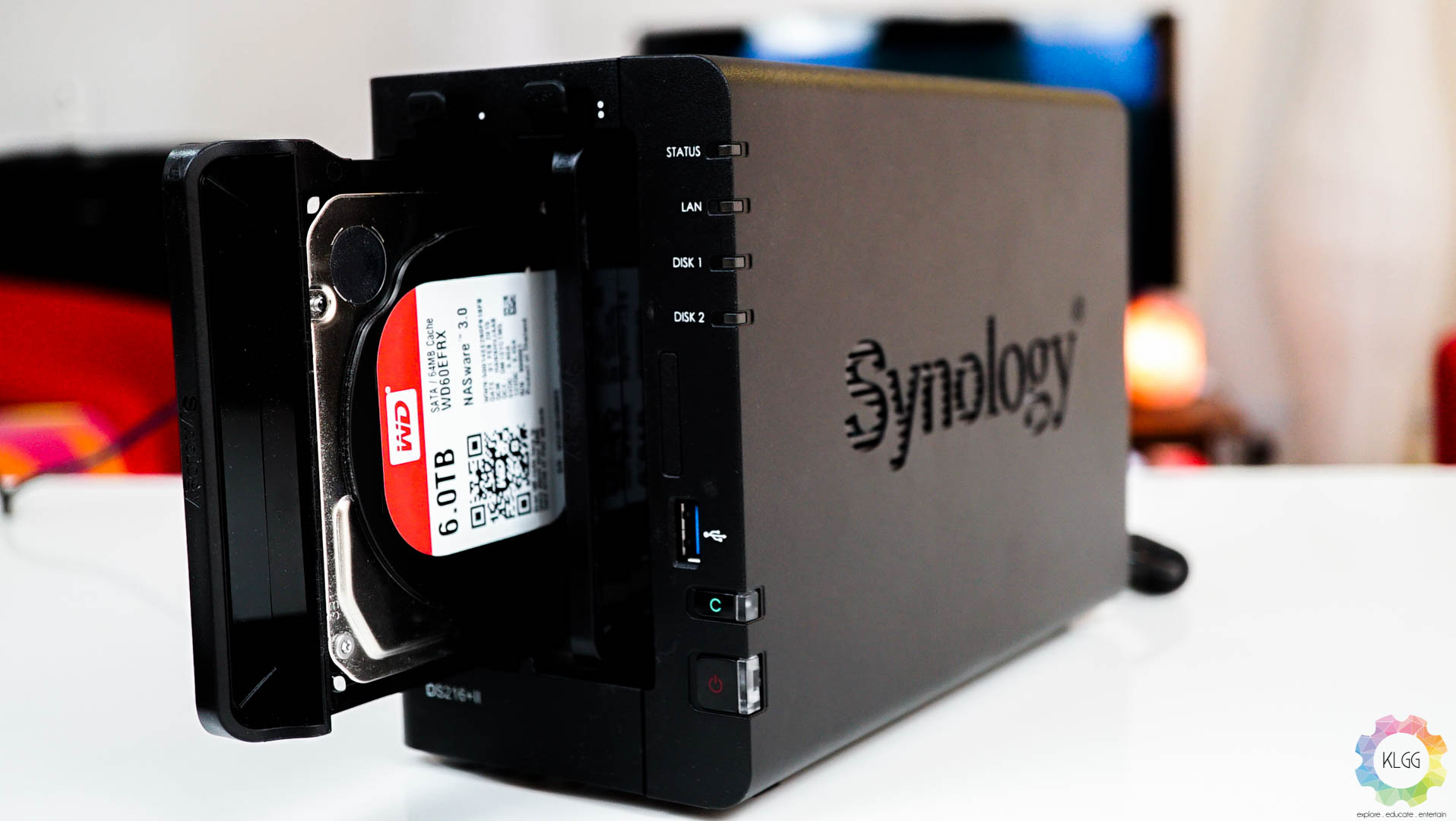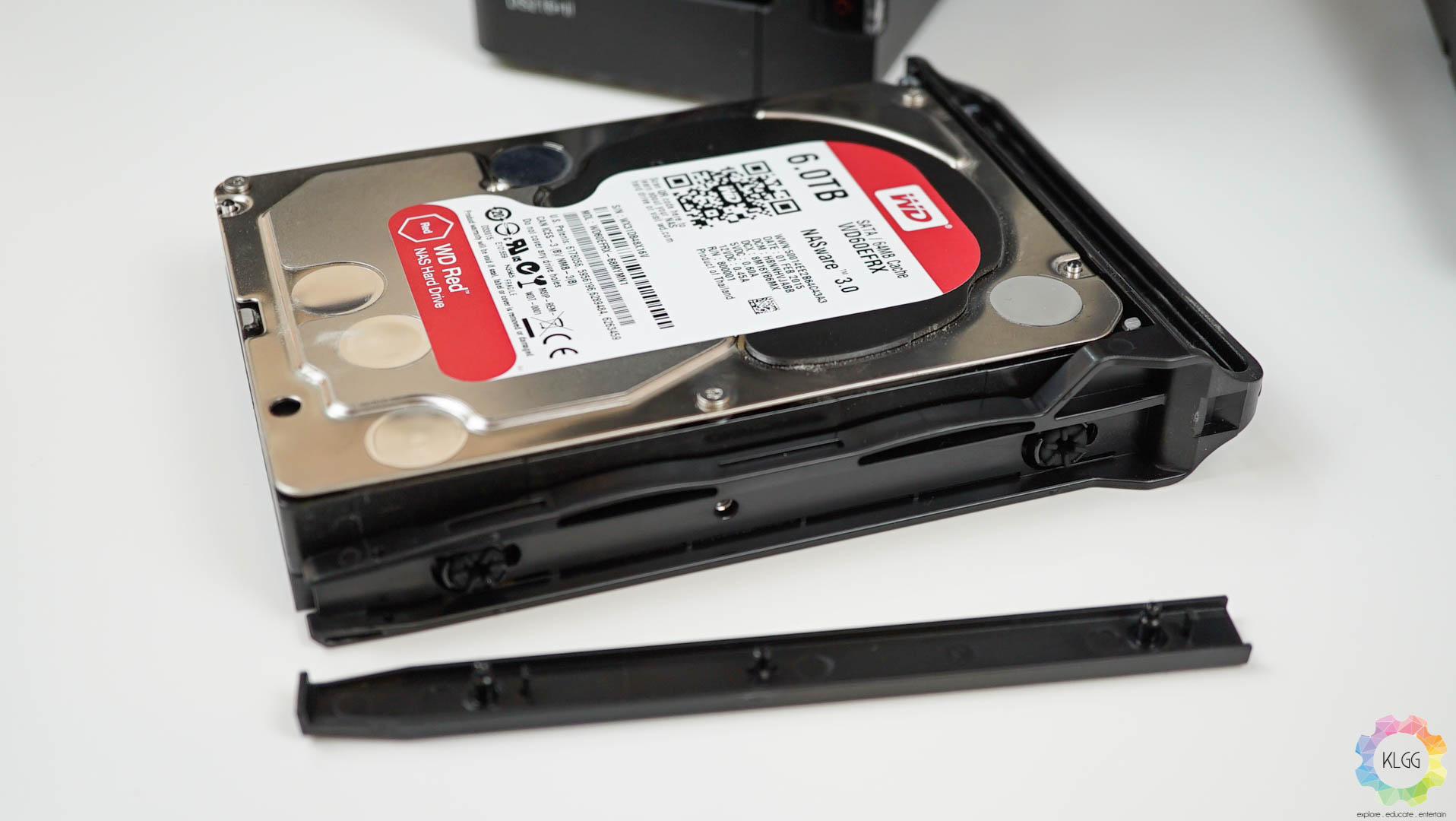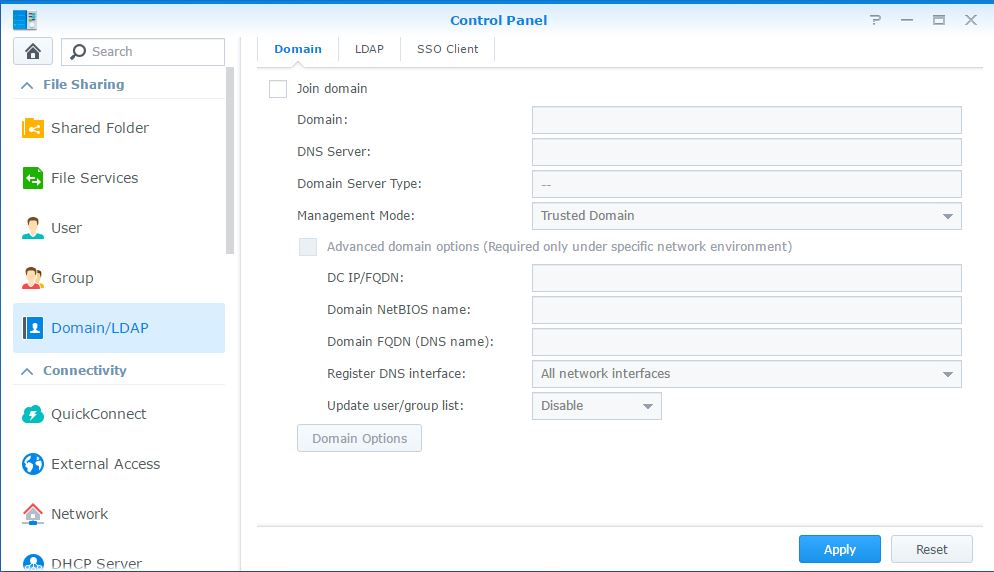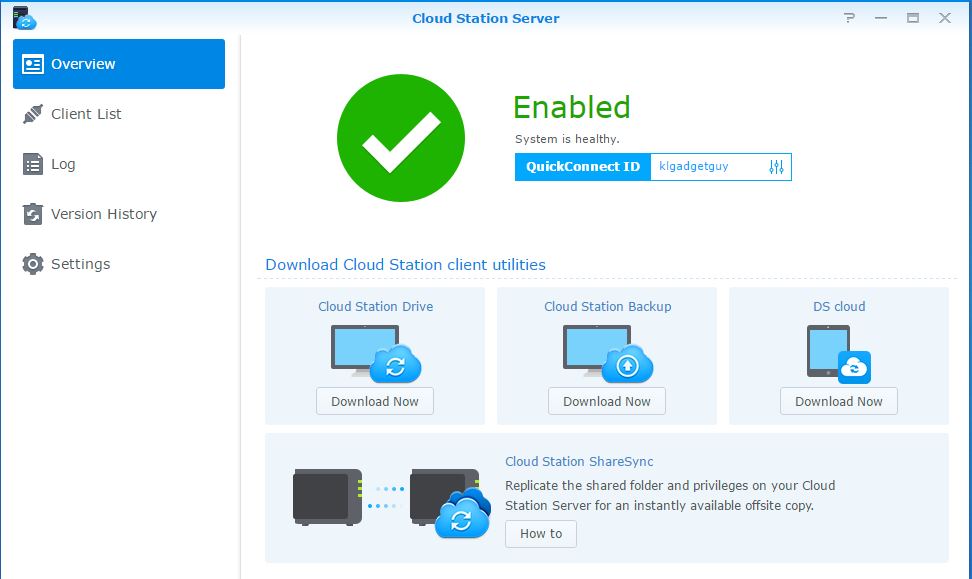4K
It wasn’t too long ago that we performed a review on Synology’s entry level DS216j 2-bay NAS, while I have to admit it is the first time that I’ve came across Synology products during that time, I was actually quite impressed with what the entry-level NAS was capable of. In this round, Synology had sent us a more capable DS216+II 2-bay NAS server for review which was also announced in Computex this year, so what can we expect from the DS216+II? We are going to find that out.
Design and Hardware
I didn’t like the DS216j’s hardware design back then, you’ll need to remove the chassis to install hard drives and there was no front USB port for backup convenience. The DS216+II had all of those flaws eliminated, installing the hard drives is as easy as removing the front plastic faceplate and pulling out the trays by lifting up the the lever.
Although Synology provided screws in the box, you don’t need to use them at all as the drive tray comes with a plastic cover with blocks to secure the hard drive, which makes the installation really effortless without the need of having a screw driver on hand, however I do recommend that you keep those screws somewhere safe just in case.
The DS216+II comes with a metal chassis that gives it a pretty solid build, it comes with one Gigabit LAN port, two USB 2.0 ports and one e-SATA port at the back and one USB 3.0 port at the front, while I wished Synology could have given all USB 3.0 ports on the NAS, I do appreciate the convenience of the front USB port for connecting external hard drives and backup data with a press of a button, the USB ports will support peripherals such as a wireless adapter and printer.
Software and User Experience
Since the DS216+II is targeted at small businesses with simultaneous user access, it is powered by a 64-bit Intel Celeron N3060 1.6GHz dual-core CPU with a burst turbo frequency of up to 2.48GHz, the NAS’s built-in 1GB DDR3 RAM is not upgradeable and we shouldn’t expect this unless you have thousands of users accessing it. The CPU alone is capable of transcoding 4K videos on-the-fly to smartphones, tablets, smart TVs and computers via Synology’s Video Station app, which is very useful if you are thinking to stream videos remotely, for instance I usually store my video projects in the NAS and when I’m out and about, I will then connect remotely to stream our videos to show our clients, otherwise I would sometimes just my collection of movies on my tablet if I were at home while the NAS stays in the office.
Synology’s DiskStation Manager is still one of the best NAS operating system that I have ever come across, while the OS core is based on Linux, its app extension is proprietary and you can only install applications from the Synology Package Center, but all thanks to the DS216+II’s Intel processor that supports the x86 architecture, you will find a lot more applications in community repositories, which is definitely a great news for advanced users.
Furthermore, the DS216+II supports Windows AD, LDAP and Domain Trust integration which IT administrators can easily connect the NAS to be part of an enterprise domain network, there’s no need to create separate user credentials and home folders are created automatically for every user that is in the network directory, which saves a lot of effort in setting up privileges for storage access.
I personally like how the DS216+II manages my backups and synchronisation across my devices, I use Cloud Station Drive to ensure my important work files are synchronised between my iMac, MacBook and PC, while Cloud Station Backup and DS Cloud ensures that files on my computer and smartphone are frequently backed up to the NAS.
Performance
Our DS216+II is fitted with two WD Red 6TB drives configured with Synology’s Hybrid RAID with data protection, the DS216+II demonstrates a decent read speed which I managed to record 118MB/s of multi-threaded sequential read when tested over a 1Gbps network connection using CrystalDiskMark, write speeds are however significantly lesser than what Synology has claimed on its website, the 83MB/s multi-threaded sequential write wasn’t as good as what we have seen on the entry-level DS216j, it should still be fast enough for simultaneous writing tasks but I’ve hoped for a better reading. Despite of that, I’m glad that DSM performs really fast on the NAS, applications launch really fast and I have been using every single day in accessing my files, performing backups and downloading stuffs online with Download Station.










